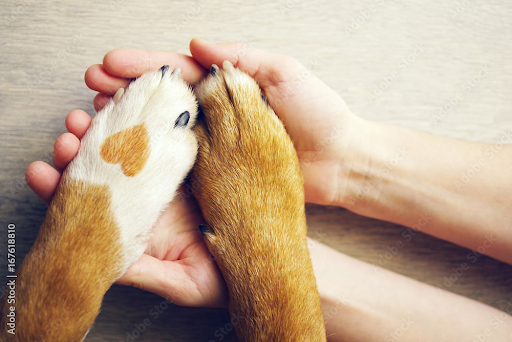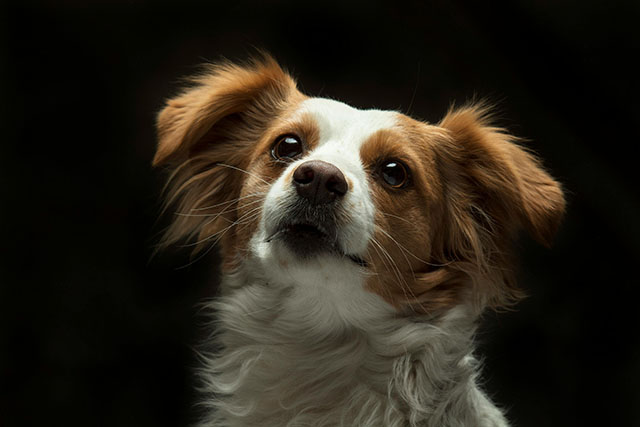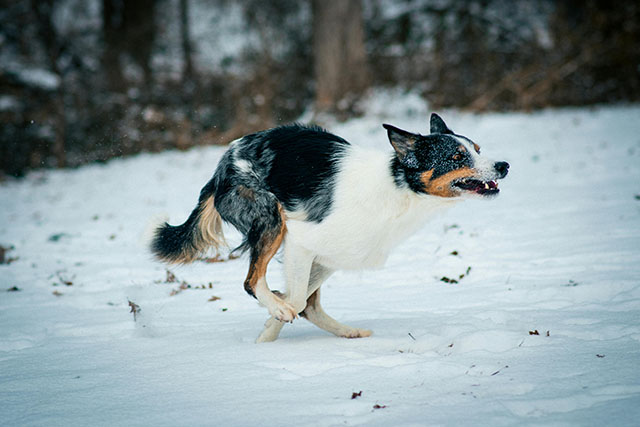As a dog parent, there’s nothing more important than ensuring your pup stays happy and healthy. One way to do this? Taking good care of their paws!
Paw care is essential for a number of reasons – from avoiding cracked or ulcerated pads to making sure your pup doesn’t struggle with joint problems later in life. With that in mind, today we’re here to share our guide to paw-sitively clean: everything you need to know about keeping those canine feet as balanced and comfortable as possible.
Keep reading for tips like how often paw nails should be trimmed, the best products for cleaning up after being outside, and advice on protecting them during walks. No matter where they tromp or stomp – your pup will have pampered paws all day long!
How Do You Take Care of a Dog’s Paw?
Taking care of your dog’s paws is vital to responsible pet ownership. Here are some steps to keep those paws in tip-top shape:
- Regular Paw Inspections: Regularly examine your dog’s paws regularly, especially after walks or outdoor playtime. Look for cuts, blister, splinters, foreign objects, or signs of infection.
- Trimming Nails: Overgrown nails can cause discomfort and affect your dog’s gait. Trim your dog’s nails as needed, or consult your veterinarian or a professional groomer for guidance. Opt for a Dog Nail Grinder with LED Light, specifically designed for large, medium, and small dogs. It’s a quiet and gentle grooming tool, ensuring your furry friend’s nails are properly taken care of.
- Moisturize Dry Pads: Just like human skin, a dog’s paw pads can become dry and cracked. Apply a pet-safe paw balm to keep them moisturized. Avoid human lotions, as they may contain harmful ingredients. Consider trying the Natural Dog Company Paw Soother Balm, a 2 oz. stick that not only moisturizes and soothes irritated paws and elbows but also offers protection against cracks and wounds.
- Paw Hair Maintenance: To prevent matting and the buildup of dirt and debris, it is important to trim the hair around your dog’s paw pads. Consider using the oneisall Dog Clippers with Double Blades – a cordless trimmer designed for grooming your pet’s hair around their paws, eyes, ears, face, and rump. This trimming tool operates with low noise, ensuring a gentle and comfortable experience for your furry friend.
- Protect from Extreme Temperatures: Avoid walking your dog on scorching pavement during hot summer days, as it can burn their paw pads. In cold weather, protect their paws from ice and snow by using dog boots.
- Check for Parasites: Inspect your dog’s paws for ticks and other parasites, especially if you’ve been in wooded areas or tall grass.
How Do You Clean a Dog’s Paw Wound at Home?
Accidents can happen; your dog may get a cut or wound on their paw. Here’s how to clean and care for it at home:
- Gather Supplies: You’ll need clean, lukewarm water, mild, pet-friendly soap, sterile gauze pads, hydrogen peroxide (3%), and a clean towel.
- Restrain Your Dog: If your dog is in pain or anxious, consider using a muzzle or getting someone to help hold them still.
- Inspect the Wound: Carefully examine the paw to determine the extent of the injury. Consult your veterinarian immediately if it’s deep, bleeding excessively, or appears infected.
- Clean the Wound: Rinse the wound to remove any dirt or debris using a gentle stream of lukewarm water. Avoid using a high-pressure water source as it can further damage the tissue. Gently pat the area dry with a clean towel.
- Apply Hydrogen Peroxide: If the wound looks dirty or contaminated, you can apply a small amount of hydrogen peroxide to help disinfect it. Do not use hydrogen peroxide if the wound is deep or puncture-like, as it can slow healing.
- Bandage the Paw: If the wound is small and not bleeding heavily, you can cover it with a sterile gauze pad and secure it with a bandage or medical tape. Change the bandage daily and watch for signs of infection.
- Keep an Eye on Healing: Monitor the wound’s progress and seek veterinary attention if you notice signs of infection, such as redness, swelling, pus, or increased pain.
Should I Let My Dog Lick His Cut Paw?
Many dogs instinctively lick their wounds to self-soothe, but is it safe to let them do it? While some licking can be beneficial, excessive licking can lead to complications. Here’s a balanced approach:
Benefits of Licking
A dog’s saliva contains enzymes to help clean and disinfect minor wounds. Licking can also promote blood flow to the injured area, which aids in healing.
Drawbacks of Excessive Licking
Too much licking can introduce bacteria from your dog’s mouth into the wound, increasing the risk of infection. It can also hinder the healing process by keeping the area constantly moist.
Use an E-Collar (Elizabethan Collar)
To strike a balance, consider using an E-collar (the infamous “cone of shame”) to prevent your dog from licking excessively. This allows the wound to heal while providing cleaning benefits from your dog’s licking.
Monitor and Control
Supervise your dog and redirect their attention when you catch them licking the wound excessively. Offer them engaging toys or activities to distract them.
How Can I Make My Dog’s Paws Healthy?
Maintaining your dog’s paw health is an ongoing process. Here are some tips to ensure your furry friend’s paws stay in great shape:
- Proper Nutrition: A balanced diet with essential nutrients, including omega-3 fatty acids, can contribute to healthy skin and paw pads.
- Regular Exercise: Exercise helps maintain overall health but toughens paw pads and keeps nails naturally worn down.
- Clean and Dry Paws: After walks, clean your dog’s paws to remove any dirt, salt, or chemicals they might have picked up. Dry them thoroughly to prevent fungal infections.
- Paw Massages: Gently massaging your dog’s paws can improve circulation and promote relaxation. It’s also an excellent opportunity to check for any abnormalities.
- Paw Protection: In extreme weather conditions, use dog boots to protect your dog’s paws from hot pavement or freezing surfaces.
- Regular Veterinary Visits: Include paw health in your routine vet check-ups. Your vet can detect early signs of issues like infections or allergies. Also watch out for these common paws problems and how to take care of it.
Key Takeaway
Caring for your dog’s paws is essential to responsible pet ownership. Regular inspections, cleaning, and preventive measures can go a long way in keeping your furry friend’s paws healthy and happy.
Remember, always consult your veterinarian for professional guidance when in doubt or suspecting a more severe issue. With proper paw care, your dog can continue to joyfully explore the world one paw at a time.
Jessica is a veterinary medicine student who is passionate about animals. Living with her cherished dog, Milo, deepens her understanding of the human-animal connection, enhancing her empathy as a future veterinarian.
Jessica’s concise articles reflect her dedication to improving the lives of animals and those who care for them, making her an inspiring figure in the pet care field.







